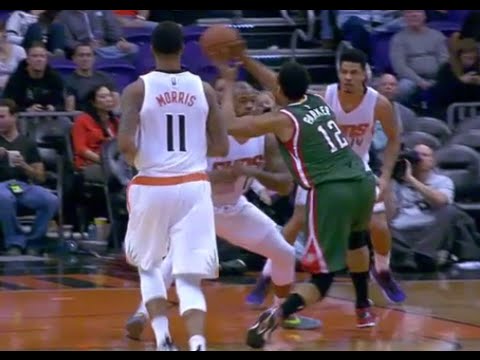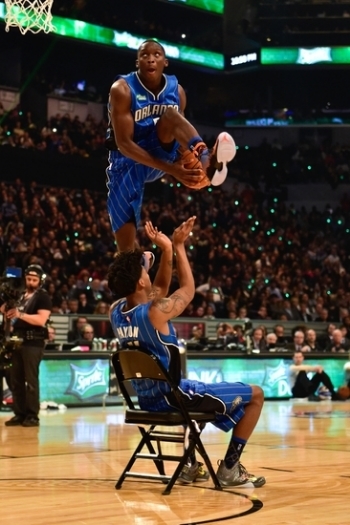GUEST BLOG BY MATTHEW IBRAHIM: THE MOST UNDERRATED SKILL IN FITNESS AND ATHLETICISM: DECELERATION AND LANDING

Matthew Ibrahim is the Owner of Mobility 101 and the Director of Sports Performance at Boston Physical Therapy & Wellness. He is on a mission to help athletes and clients build stronger, more resilient human movement and performance. Connect with Matthew on Facebook, Instagram, and Twitter. Learn more about Mobility 101 on www.mobility-101.com.
Here's What You Need to Know:
- Focusing on speed and quickness alone isn't going to help bulletproof your hip, knee, and ankle joints for long-term athletic success. Learning how to slow down the right way is just as important.
- Jumping high and producing force through the ground is a highly coveted display of explosive athleticism. However, if you can't control your body on the way down and land with proper mechanics, it won't do you any good.
- Possessing the ability to decelerate and land in only one plane of motion won't cut it either. You need to own both of these skills in linear and multidirectional formats.

Sportsnaut.com
SPEED KILLS
How often have you heard this phrase with respect to sports and athletic endeavors? Too often, in my opinion.
It's no surprise that blistering speed and quickness are unique skills that some of the best athletes in the world own. The problem is that many athletes lack body control in these departments.
The true definition of an athlete is “body control.” Being able to maneuver from side to side, stop on a dime, change directions in an instant, and go from low speed to high speed in a matter of seconds are all fundamental to athletes. The overarching theme necessary in all of these outlets is body control.
Most importantly, lacking body control inevitably leads to compensatory patterns and injury at some point down the line.
Your best bet to bulletproof your joints, prevent injury, and enhance performance? Acquire the skills of deceleration and landing.
COMMON INJURIES IN SPORTS
Athletes involved in sports that require high speeds and change of direction (i.e., soccer, football, tennis, etc.) undergo a lot of stress through the major joints below the waist: hip, knee, and ankle.

i.ytimg.com
Most noticeably though, one clear-cut injury comes to mind that occurs at a very frequent rate: ACL tears in the knees. Athletes from major professional sports succumbing to a torn ACL have become the norm recently. It doesn't help when freak athletes a la Adrian Peterson return to play in super human time frames either.
It's nearly impossible to stop an ACL tear from happening. We all know this. Even when preventative measures are taken in training and physical preparation, it's still difficult to avoid. However, acquiring the skill of deceleration can provide many benefits in this regard.

Braceshop.com
Another major injury we see in sports that primarily occurs when a ton of jumping and landing is required (i.e., basketball, volleyball, etc.) is sprained ankles. Tell me the last time you turned on SportsCenter and didn't see a basketball player land and roll an ankle? This happens on a constant basis. It's just the nature of the sport due to the constant demands.
The most important part is that learning how to land with sound mechanics can put you in a better position to help prevent this injury from happening in the first place.
DECELERATION AS A SKILL
Think of deceleration as pumping the brakes to prevent injury.
I don't care how fast your car can go until you show me how well you can slow down.
Being able to control your body, coordinate your movement seamlessly, and demonstrate body awareness in space is a key cornerstone in athleticism. Of course, going fast comes with more flare and hype because it just looks better.
However, don't be fooled. Your brakes are just as important as your speed. Learning how to use your brakes through a progressive approach that highlights the basic components of slowing down and changing direction through a seamless transition cannot be overstated.
You train deceleration just like you train speed: constant practice and effort over time. Mastery of the skill of deceleration takes time and focus, but eventually affords you with many benefits of athleticism while helping to bulletproof your body from injury.

Fancied.com
LANDING AS A SKILL
How often have you seen athletes who can jump really, really high?
It always seems so amazing for someone to possess this skill, but what often goes underappreciated and devalued is how that particular individual lands.
Producing force through the ground and expressing it through an explosively high jump is definitely a great skill for an athlete to have. But, what good does it do you when you can't absorb that force on the way down and land with proper mechanics?
It's really the same exact thing as a fast car that can't slow down. (Luis Mendoza from the Mighty Ducks movies comes to mind here.)
Landing properly comes with many benefits toward athleticism, most notably in body control and balance. Think about how much body control and balance you need to actually jump in the first place. Now, you can see how the skills of jumping and landing are BOTH so crucial to your athletic success in addition to helping you prevent injuries from occurring.
TRAINING APPLICATIONS FOR DECELERATION AND LANDING
Below, I've compiled a short list of progressive exercises for you to begin incorporating into your training routines that will help you learn the skills of deceleration and landing. Ultimately, you'll be able to increase your overall movement and performance after acquiring these skills.
Be sure to follow the order of progressions for each respective exercise.
Deceleration with Linear Emphasis
1. Linear Quickness with Deceleration Focus (Basic)
Key Points:
- Set up two cones 5 yards apart (Cone A and Cone B)
- Moving from Cone A to Cone B equals 1 rep
- Perform 3 total sets of 10 reps with a 1-second pause at each cone
- Make sure to rest for 30-60 seconds in between sets
2. Resisted Linear Quickness with Deceleration Focus (Advanced)
Key Points:
- Loop a resistance band around a sturdy pole and set up one cone in front of it (Cone A)
- Set up another cone (Cone B) 5 yards from Cone A
- With the resistance band looped around your waist, perform the drill from Cone A to Cone B and then slowly come back with body control (this equals 1 rep)
- Perform 3 total sets of 8 reps with a 1-second pause at Cone B
- Make sure to rest for 30-60 seconds in between sets
Deceleration with Lateral Emphasis
1. Lateral Slides with Deceleration Focus (Basic)
Key Points:
- Set up two cones 5 yards apart (Cone A and Cone B)
- Moving from Cone A to Cone B equals 1 rep
- Perform 3 total sets of 5 reps/side with a 1-second pause at each cone
- Make sure to rest for 30-60 seconds in between sets
2. Resisted Lateral Slides with Deceleration Focus (Advanced)
Key Points:
- Loop a resistance band around a sturdy pole and set up one cone in front of it (Cone A)
- Set up another cone (Cone B) 5 yards from Cone A
- With the resistance band looped around your waist, perform the drill from Cone A to Cone B and then slowly come back with body control (this equals 1 rep)
- Perform 3 total sets of 5 reps/side with a 1-second pause at Cone B
- Make sure to rest for 30-60 seconds in between sets
Landing with Bilateral Emphasis
1. Mini-Band Squat Jump with Non-Countermovement Focus (Basic)
Key Points:
- Place a mini-band around your legs slightly above your knees
- Be sure to jump straight up in the air and land properly on the way down
- Perform 3 total sets of 8 reps with a 1-second pause when you land
- Make sure to rest for 30-60 seconds in between sets
- The goal is to become proficient here until you're ready to advance to the Mini-Band Linear Hop with Non-Countermovement Focus (Advanced)
2. Mini-Band Lateral Squat Jump with Non-Countermovement Focus (Basic)
Key Points:
- Place a mini-band around your legs slightly above your knees
- Be sure to jump laterally while landing properly on the way down
- Perform 3 total sets of 5 reps/side with a 1-second pause when you land
- Make sure to rest for 30-60 seconds in between sets
- The goal is to become proficient here until you're ready to advance to the Mini-Band Lateral Heiden Hop with Non-Countermovement Focus (Advanced)
Landing with Unilateral Emphasis
1. Mini-Band Linear Hop with Non-Countermovement Focus (Advanced)
Key Points:
- Place a mini-band around your legs slightly above your knees
- Be sure to hop from one leg and land with proper mechanics on the other leg
- Perform 3 total sets of 5 reps/side with a 1-second pause when you land
- Make sure to rest for 30-60 seconds in between sets
2. Mini-Band Lateral Heiden Hop with Non-Countermovement Focus (Advanced)
Key Points:
- Place a mini-band around your legs slightly above your knees
- Be sure to hop from one leg and land with proper mechanics on the other leg
- Perform 3 total sets of 5 reps/side with a 1-second pause when you land
- Make sure to rest for 30-60 seconds in between sets
ABOUT THE AUTHOR

Tim DiFrancesco, PT, DPT spent 6 seasons as the Head Strength & Conditioning Coach of the Los Angeles Lakers and is the founder of TD Athletes Edge. He is nationally renowned for his evidence-based and scientific approach to fitness, training, nutrition, and recovery for athletes and fitness enthusiasts.
